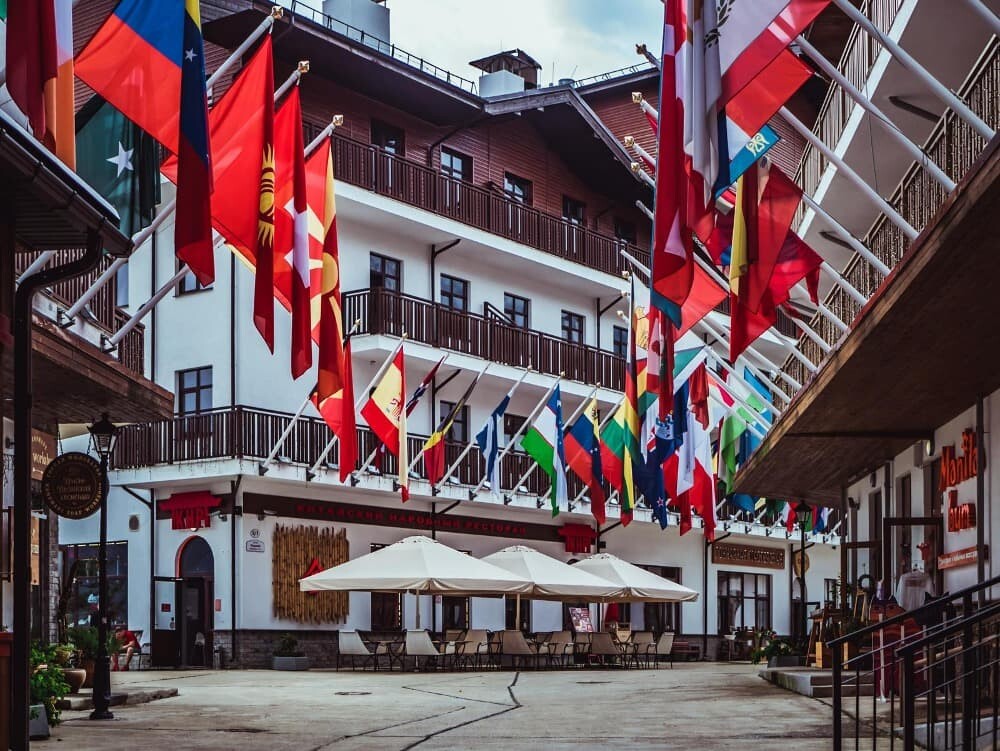We live in a world with an impressive cultural richness, where cultures coexist with their different traditions, religions, arts, gastronomy, and, of course, languages.
Today we will talk about languages in the world, and although it is estimated that there are more than 7,000 languages with their own structures and modes of expression, it is complicated to know the exact number. Many of these languages are endangered (preserving languages is crucial for cultural diversity and the identity of communities), with approximately half of the world’s languages at risk of disappearing in this century. In contrast, other languages, such as English, Mandarin, Spanish, and French, have a broad global influence and are widely taught as second languages.
Some languages, such as English, French, Spanish, Russian, Arabic, and Chinese, are official languages of international organizations such as the UN.
Languages are distributed differently on different continents. Asia is the continent with the greatest linguistic diversity, with languages such as Chinese, Hindi, Arabic, Bengali, and Japanese. Africa is also extremely linguistically diverse, with important languages such as Swahili, Hausa, Yoruba, and Amharic. In Europe, Indo-European languages predominate, including English, Spanish, French, German, Russian, and Italian. In America, there are a variety of indigenous languages, in addition to European languages such as Spanish, English, Portuguese, and French. And in Oceania, there is also high linguistic diversity, such as Polynesian languages, with Maori and Hawaiian standing out.

WHAT ARE THE MOST SPOKEN LANGUAGES IN THE WORLD?
Here we can classify them in two different ways: on the one hand, the most spoken native languages, and on the other hand, the total number of speakers (including second language).
We will classify them as the second option, looking at the total number of people who know the language and use it, even if it is not their mother tongue.
ENGLISH
With more than 1.45 billion total speakers, it tops the list of the most widely used languages worldwide. And native speakers number around 378 million people.
It originated in England and is a West Germanic language that evolved from Anglo-Saxon languages spoken by Germanic tribes that invaded Britain in the 5th and 6th centuries. It has been influenced by Latin, due to the Roman occupation; Old Norse, due to Viking invasions; and French, due to the Norman Conquest in 1066. It is divided into three main periods: Old English (450-1150), Middle English (1150-1500), and Modern English (from 1500 to the present).
It is the official or main language in many countries, including the United States, the United Kingdom, Canada, Australia, New Zealand, Ireland, and several Caribbean and African countries. And it is the lingua franca in many areas, including business, science, technology, aviation, diplomacy, and entertainment.
There are varieties such as British English, American English, Australian English, Canadian English, and Indian English, each with its own phonetic, lexical, and grammatical characteristics. And although there are many varieties, standard English (both British and American) is generally the model taught.
MANDARIN CHINESE
With more than 1.12 billion total speakers, it is the second most widely used language worldwide. And native speakers number around 917 million people.
Mandarin, also known as Standard Chinese, is one of the varieties of the Chinese language, which in turn is part of the Sino-Tibetan language family. It originated in northern China and is mainly based on the Beijing dialect.
The history of Mandarin dates back several millennia; however, the standardization of modern Mandarin began in the 14th century during the Ming dynasty, when the Beijing dialect was established as the basis for the official language of the government.
Mandarin has undergone several reforms over the centuries, especially during the 20th century, with the adoption of Pinyin, a romanization system, and the simplification of characters in the People’s Republic of China.
It has various dialects and regional variants spoken in different parts of China. These dialects can vary significantly in terms of pronunciation, vocabulary, and grammar: Beijing dialect, Northeastern dialect, Tianjin dialect, Jin dialect, and Jilu dialect, among many others.

HINDI
With more than 602 million total speakers, it is the third most widely used language worldwide. And native speakers number around 344 million people.
It is one of the most spoken languages in the world, especially in India, where it is one of the official languages along with English. It is predominantly spoken in the north and center, as well as in some expatriate communities around the world. And it is written in the Devanagari alphabet.
Hindi is part of the Indo-Aryan language family. It has a close relationship with Urdu, which is spoken in Pakistan; both share a similar grammatical and lexical base, although they use different writing systems and have certain differences in vocabulary due to historical and religious influences.
It is one of the 22 languages officially recognized in the Constitution of India and is the main language of the central government.
SPANISH
With more than 559 million total speakers, it is the fourth most widely used language worldwide. And native speakers number around 486 million people.
Spanish is the official or co-official language in 21 countries, mainly in Latin America, Spain, and Equatorial Guinea. It is also spoken in significant communities in the United States, the Philippines, and other places due to the diaspora. It is written using the Latin alphabet.
Although Spanish is quite uniform in its written form, there are diverse dialectal variants in its spoken form. Differences can be significant between regions of Latin America and Spain. It is one of the official languages of the UN, the European Union, the Organization of American States, and other international organizations.
It has a rich literary and cultural tradition, with prominent figures such as Miguel de Cervantes, Gabriel García Márquez, and many others. In addition, music, cinema, and television in Spanish have a significant global influence.
FRENCH
With over 274 million total speakers, it is the fifth most widely used language worldwide. Approximately 80 million people are native speakers.
French is spoken in many countries, including France, Canada (mainly in Quebec), Belgium, Switzerland, several countries in Africa (such as Senegal, Ivory Coast, and the Democratic Republic of Congo), and some regions of the Caribbean and the Pacific. It is one of the official languages of many international organizations and is widely taught as a foreign language. It is also written using the Latin alphabet.
There are several variants of French, with dialectal differences among French-speaking regions in Europe, America, Africa, and other parts of the world. However, standard French, based on the Parisian dialect, is widely understood and used.
It has a rich cultural, literary, and philosophical tradition, with prominent figures such as Victor Hugo, Voltaire, Jean-Paul Sartre, and many others.
Following these five most spoken languages in the world, there are Arabic, Bengali, Russian, Portuguese, and Urdu.
These languages play a crucial role in global communication, education, culture, and diplomacy, facilitating the interconnection between people from different parts of the world.
Linguistic diversity is a reflection of the cultural and human wealth of the planet, although it faces significant challenges due to globalization and the dominance of some languages over others, so it must be valued and protected.




